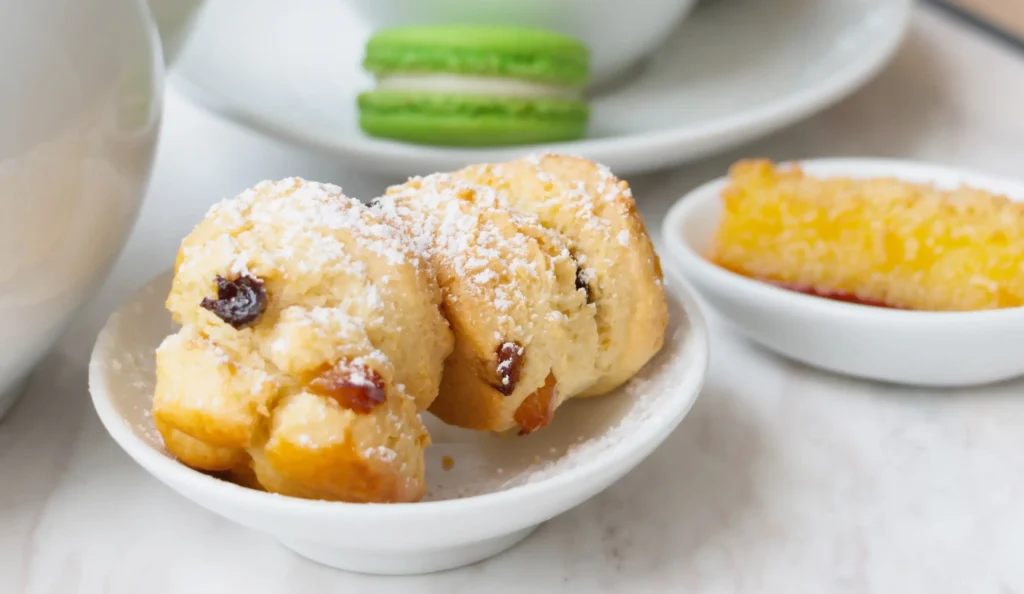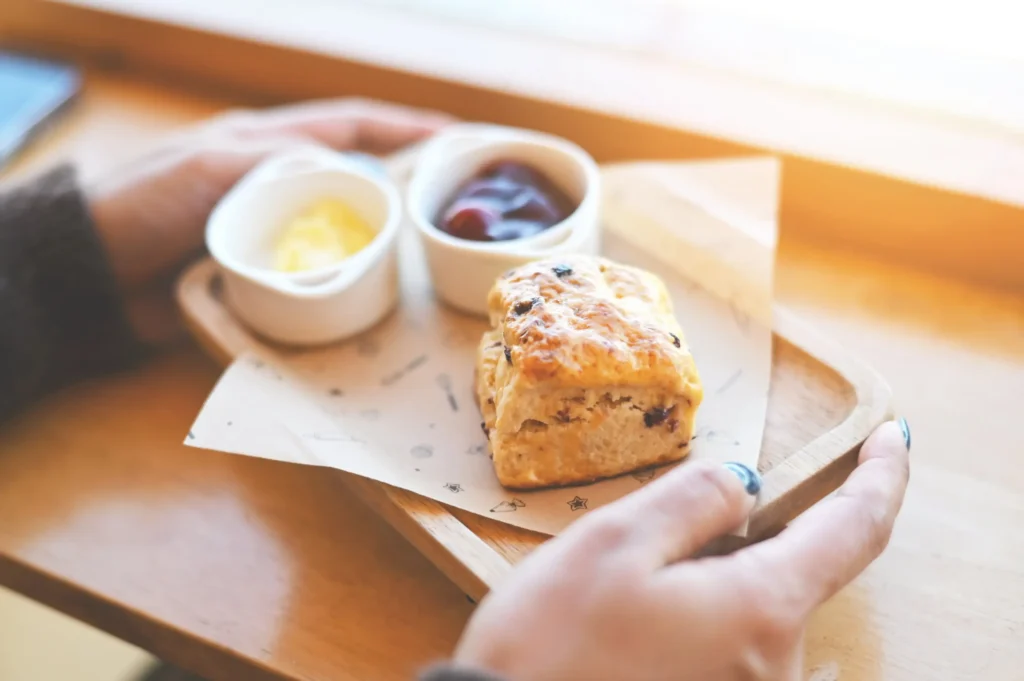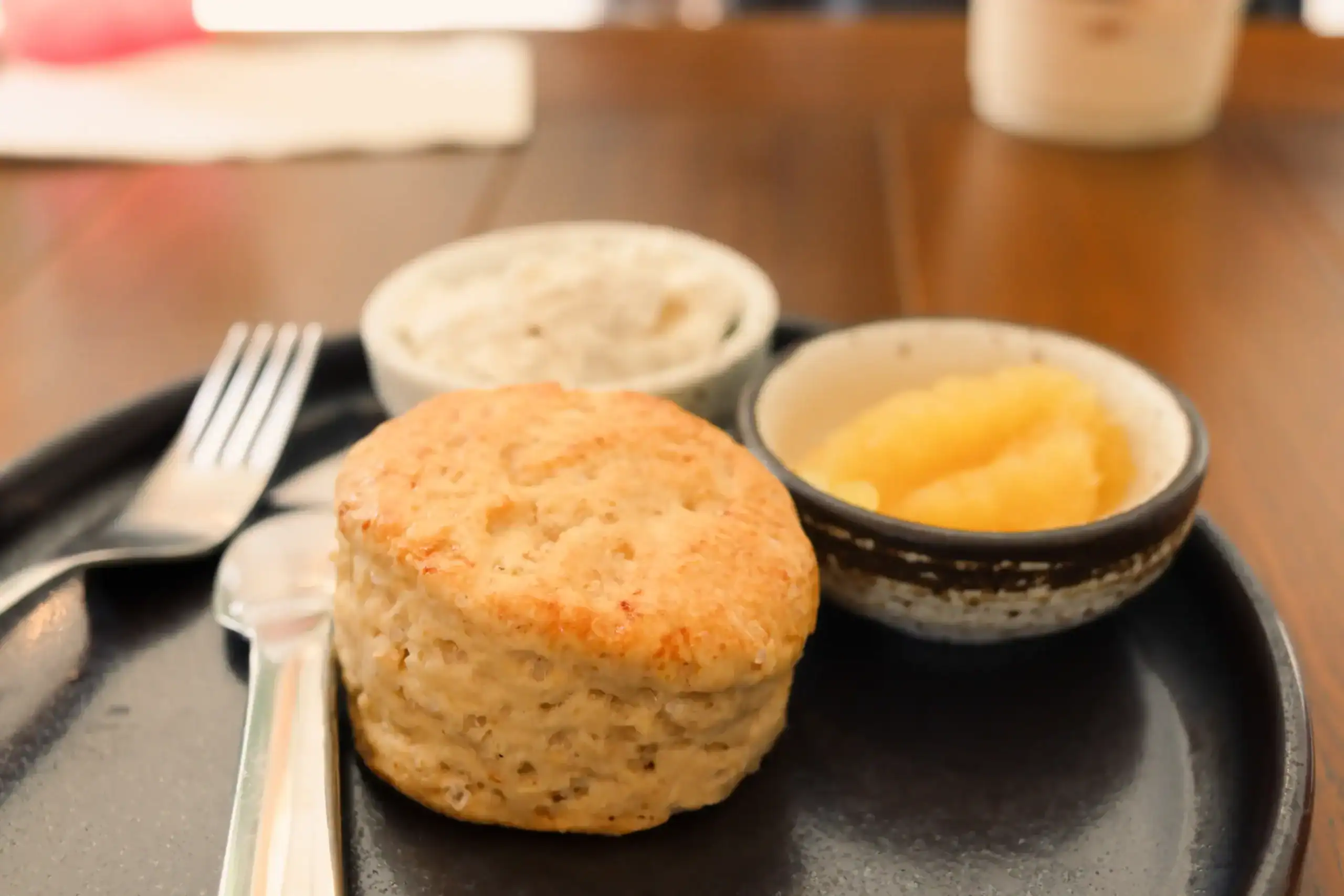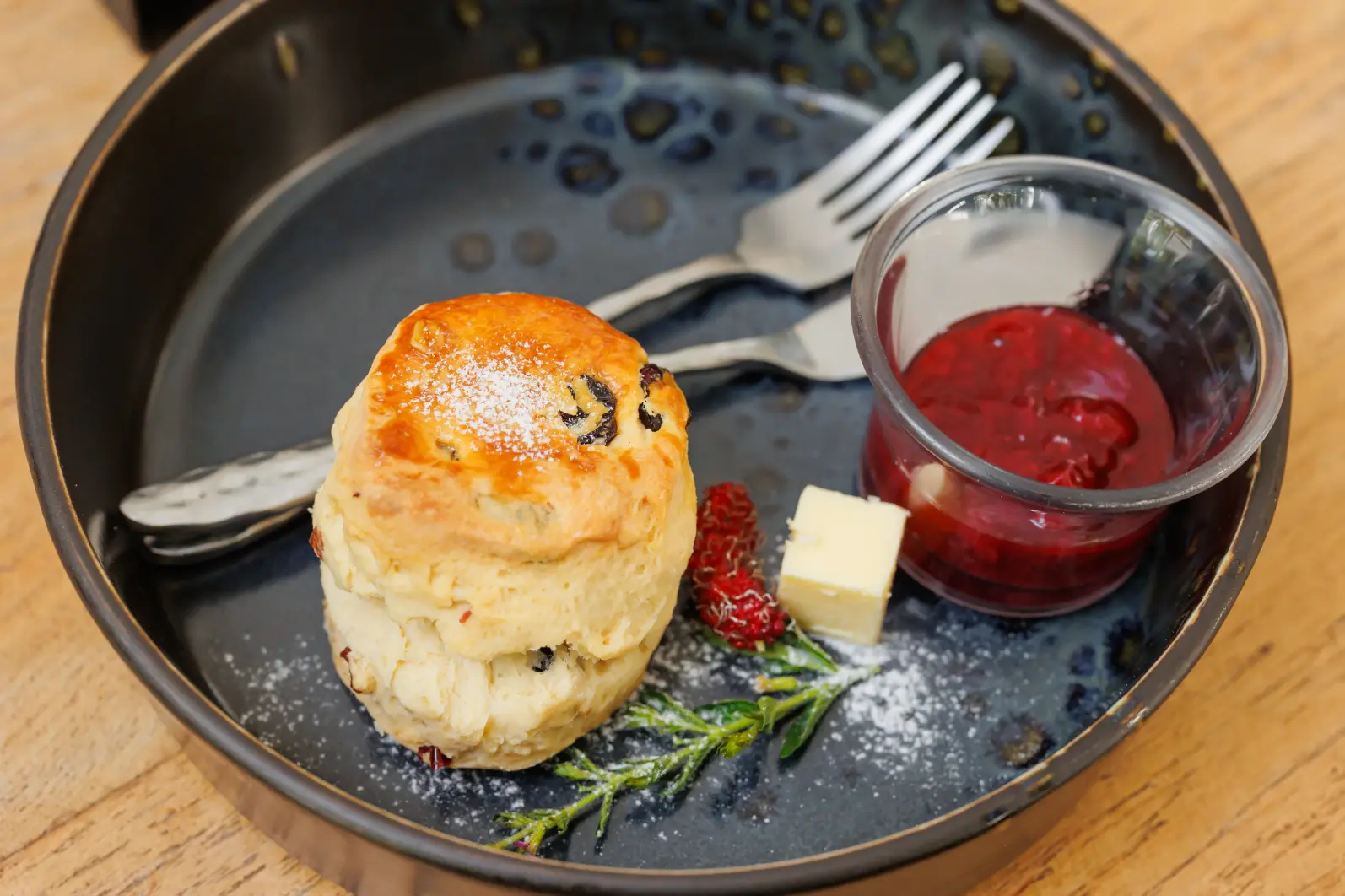Introduction
Traditional english scones are a key part of British afternoon tea culture. They have been enjoyed for centuries, often served with clotted cream and jam. These soft, buttery treats became popular in the 18th century and remain a staple in high tea traditions.
Many confuse British scones with American scones. The difference is clear. English scones are light, flaky, and mildly sweet. They are meant to be served warm with toppings. American scones, however, are denser, sweeter, and often packed with mix-ins like chocolate or nuts.
So, what makes the perfect English scone? The key is cold butter, self-raising flour, and minimal handling. This ensures a soft, crumbly texture with a golden-brown crust.
In this guide, you will learn how to make homemade English scones step by step. We will cover essential ingredients, baking techniques, and expert tips to help you get the best results.
What Are Traditional English Scones?

Brief History of Scones in the UK
Scones first appeared in Scotland in the early 1500s. Originally, people made scones with oats and cooked them on a griddle. Over time, they evolved into the flour-based, oven-baked version we know today. By the 18th century, afternoon tea and high tea became a tradition in Britain, and scones became an essential part of it.
The Difference Between Scones, Biscuits, and Other Pastries
Many people confuse English scones with American biscuits. Here’s how they differ:
- English scones – Soft, flaky, and slightly sweet. Best served with tea, clotted cream, and jam.
- American biscuits – Buttery, savory, and often eaten with gravy.
- American scones – Dense, sweet, and loaded with mix-ins like chocolate, fruit, or nuts.
Common Ingredients in Traditional Scones
The best homemade scones use simple ingredients:
- Self-raising flour – Ensures a soft and fluffy texture.
- Cold butter – Creates flakiness.
- Sugar – Adds mild sweetness.
- Milk or buttermilk – Keeps the dough soft.
- Baking powder – Helps the scones rise.
- Eggs (optional) – Add richness.
These simple ingredients create light and crumbly scones with a classic British flavor.
Substitutions for Dietary Needs
You can make vegan or gluten-free scones with these swaps:
- Gluten-free flour blend – Replaces self-raising flour.
- Vegan butter or coconut oil – Substitutes for butter.
- Plant-based milk – Oat, almond, or soy milk works well.
- Flax egg or applesauce – Replaces eggs.
These alternatives help you enjoy delicious homemade scones with a dietary-friendly twist.
Step-by-Step Guide to Making Perfect Scones at Home
Preparing the Dough
Combine the dry ingredients by mixing flour, baking powder, sugar, and salt together.
Add cold butter – Cut it into small cubes and mix until the texture resembles breadcrumbs.
Rolling and Shaping
Gently knead the dough – Avoid overmixing to keep the scones light.
Roll it out to about 1 inch thick – This ensures even baking.
Cutting the Scones
Use a round cutter for classic scones – Press down without twisting to help them rise.
Baking Tips
Preheat the oven to 220°C (425°F) – A hot oven gives the scones a golden top.
Bake for 12-15 minutes – They should be golden brown and firm to the touch.
Getting a Golden Top
Brush with milk or egg wash before baking – This adds a glossy finish.
Serving & Pairing: What to Enjoy with Your Scones

Traditional British Accompaniments
The best way to serve English scones is with:
- Clotted cream – Rich and thick, perfect for spreading.
- Strawberry or raspberry jam – Adds sweetness.
The Jam First vs. Cream First Debate
People in Devon spread clotted cream first, then jam. In Cornwall, they do the opposite. Which way do you prefer?
Best Tea Pairings
- English Breakfast Tea – A strong black tea that complements the buttery scones.
- Earl Grey – Adds a citrusy twist.
- Darjeeling – A lighter option for those who enjoy floral flavors.
Other Toppings and Spreads
For variety, try:
- Honey – A natural sweetener.
- Lemon curd – Adds a tangy kick.
- Butter – Keeps it simple and classic.
Expert Tips for Fluffy and Crumbly Scones Every Time
Why Cold Butter is Key
Cold butter melts while baking, creating air pockets that make scones light and flaky.
Avoid Overmixing the Dough
Overworking the dough leads to dense scones. Mix just until combined for the best results.
Baking Powder vs. Self-Raising Flour
Both work, but self-raising flour gives a more consistent rise. If using plain flour, add 1 teaspoon of baking powder per cup.
Storage Tips
Keep them fresh for up to two days by storing them in an airtight container.
Freeze for later – Wrap in plastic and freeze for up to three months.
How to Reheat Scones
Oven method – Bake at 160°C (320°F) for 5 minutes.
Microwave method – Heat for 10-15 seconds for quick softening.
Traditional English scones Recipe: Ingredients and Instructions

Traditional English scones Recipe
Ingredients
Method
- Preheat the Oven: Set your oven to 220°C (425°F). Line a baking sheet with parchment paper.
- Mix the Dry Ingredients: In a large mixing bowl, stir together the self-raising flour, sugar, and salt.
- Incorporate the Butter: Add the cold butter to the bowl. Use your fingertips to rub the butter into the flour until the mixture looks like coarse breadcrumbs.
- Add the Wet Ingredients: Pour in the milk and heavy cream. Stir gently with a spatula until the dough starts to come together. If using raisins or currants, fold them in now.
- Shape the Dough: Sprinkle a light layer of flour on your work surface, then place the dough on it. Gently press it into a 1-inch thick circle or square. Avoid overworking the dough.
- Cut the Scones: Use a round cutter (or knife for wedges) to cut out scones. Place them on the prepared baking sheet.
- Brush with Cream: Lightly brush the tops of the scones with extra heavy cream for a golden finish.
- Bake the Scones: Bake for 12-15 minutes, or until the tops turn a golden brown color.Remove from the oven and let them cool slightly.
- Serve and Enjoy: Serve warm with clotted cream and jam for an authentic British tea experience.
FAQs About Traditional English Scones
Many people have questions about making perfect English scones. Here are some common ones with helpful answers.
1. Why Didn’t My Scones Rise Properly?
Several factors can affect the rise of your scones:
- Expired baking powder – Always check the freshness of your ingredients.
- Overmixed dough – Handle it gently to keep the texture light.
- Incorrect oven temperature – Preheat the oven properly for even baking.
2. How Do I Get a Soft and Fluffy Texture?
- Use cold butter – It creates flaky layers.
- Avoid over-kneading – The dough should be just combined.
- Roll the dough thick – At least 1 inch for tall, soft scones.
3. Can I Make Scones Without Dairy or Eggs?
Yes! Here are some easy swaps:
- Dairy-free scones – Use plant-based butter and milk alternatives like oat, soy, or almond milk.
- Egg-free scones – Replace eggs with flaxseed meal, applesauce, or mashed bananas.
These substitutions work well for vegan and allergy-friendly scones.
4. How Should I Store and Reheat Scones?
- Short-term storage – Store in an airtight container at room temperature for up to two days.
- Long-term storage – Freeze for up to three months to maintain freshness.
- To reheat – Warm them in the oven at 160°C (320°F) for 5 minutes or microwave for 10-15 seconds.
5. What’s the Best Way to Serve Scones?
- Traditional style – With clotted cream and jam.
- Savory option – Add cheese, herbs, or butter.
- Best tea pairings – Enjoy scones with Earl Grey, English Breakfast, or Darjeeling tea.
Conclusion
Making traditional English scones is simple. The key is using high-quality ingredients, cold butter, and proper baking techniques. Whether you enjoy them plain, sweet, or with a twist, scones are a delicious addition to any tea time.
Try different flavors, like fruit scones or cheese scones, to mix things up. And don’t forget to join the jam vs. cream debate in the comments!
Try also our:


5 thoughts on “Traditional English Scones Recipe: How to Make Perfect Scones at Home”